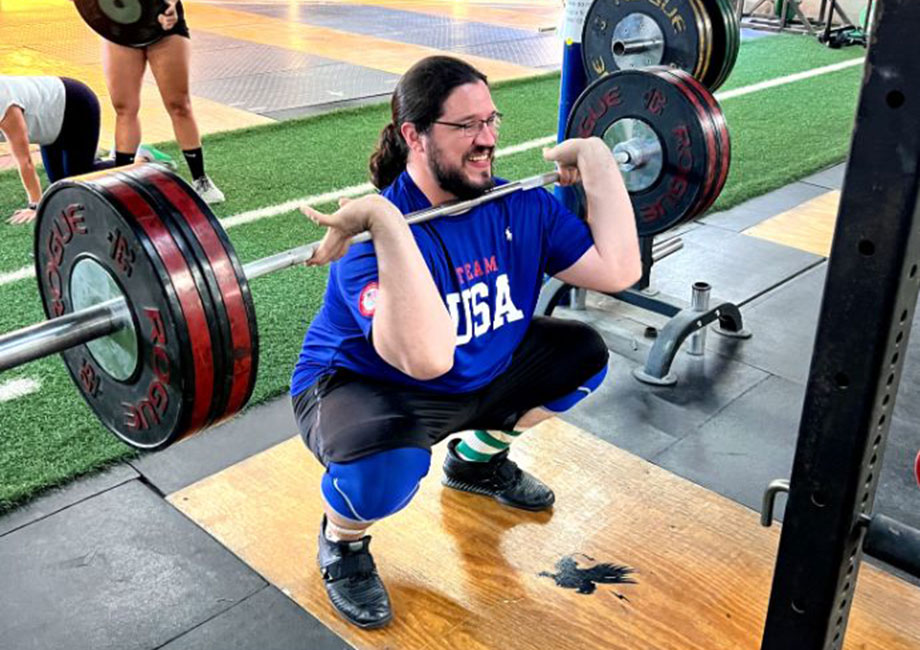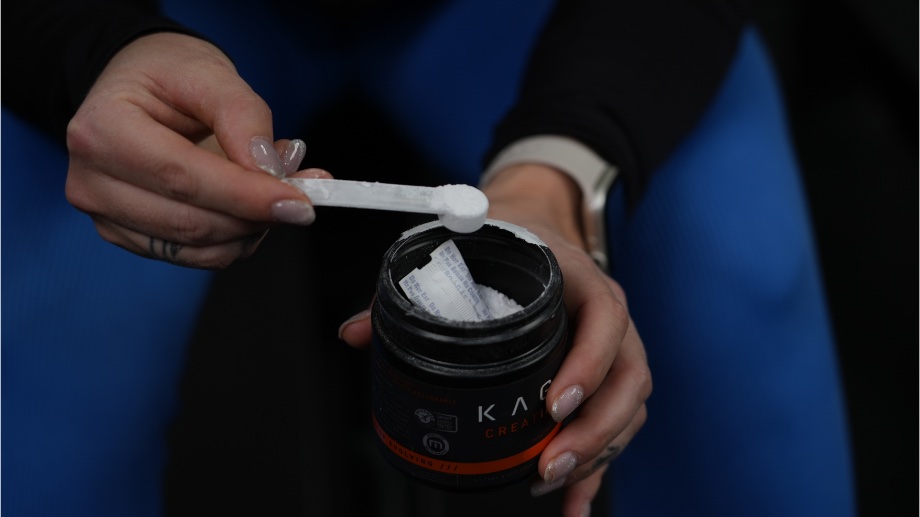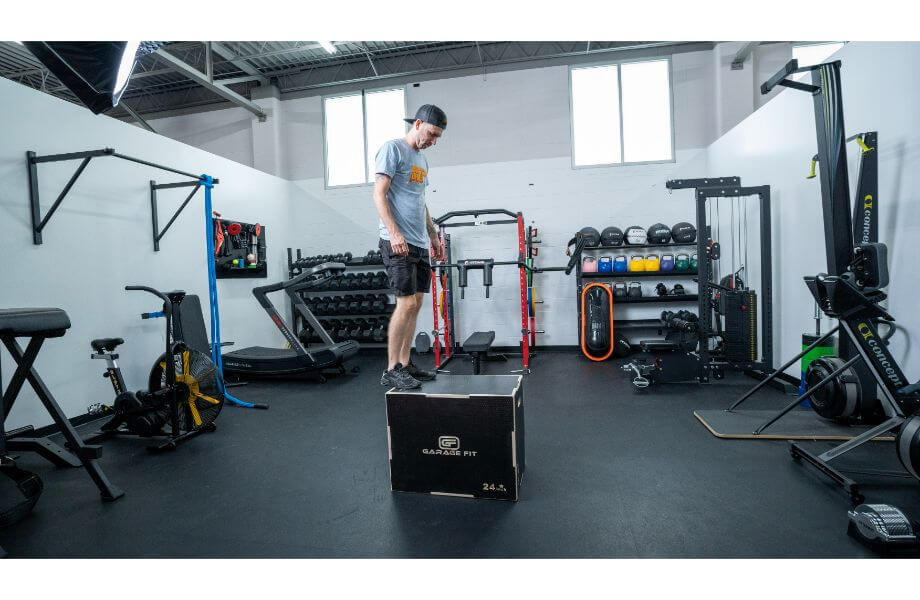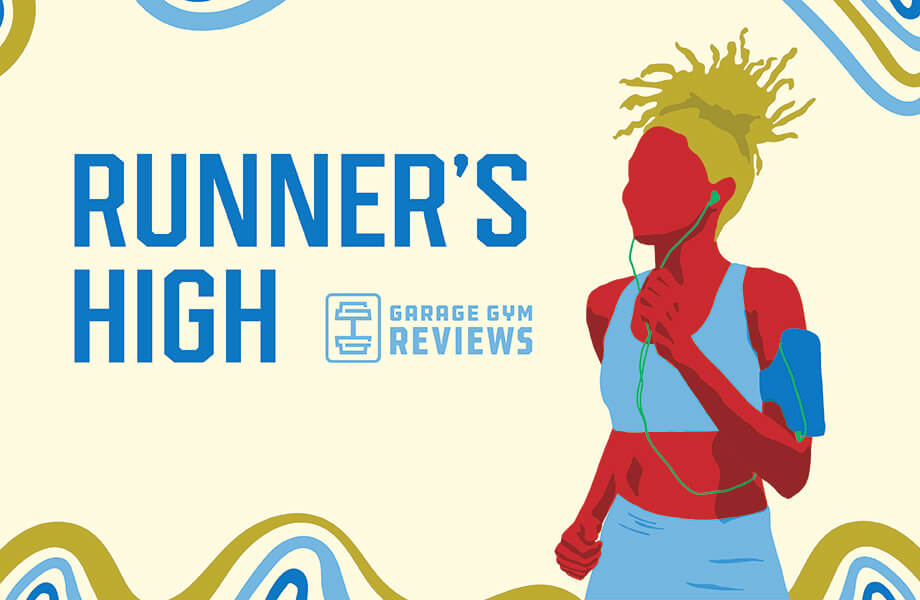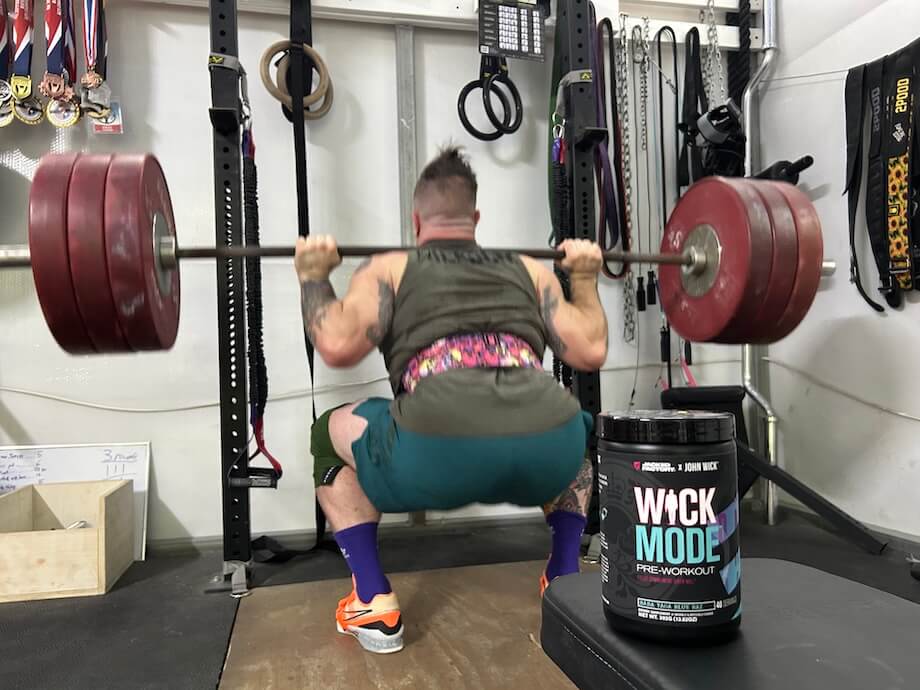Despite being frequently overshadowed by its popular cousin, the front squat brings just as much value as the back squat. A full-body exercise that taxes your quads, core, and upper arms, it offers excellent strength- and muscle-building potential for athletes, competitive lifters, and general fitness enthusiasts. However, as a certified personal trainer (CPT) who’s dabbled in powerlifting and CrossFit over the years, I’ll be the first to admit it requires plenty of patience and practice to master your front squat technique.
RELATED: Front Squat Vs Back Squat
With a unique loading pattern that places different demands on your body, it’s important to understand the nuances of the movement so you can maximize your time under the bar. In this comprehensive guide, I’ll break down the proper front squat form, explore variations and alternatives, and highlight common mistakes that can quickly turn this exercise from rewarding to frustrating.
So, strap up your favorite weightlifting shoes and let’s show some love for the unsung hero of the squat family.
How To Do The Front Squat
The front squat is a powerful compound exercise that targets multiple muscle groups, primarily your quads, core, and upper back. Proper execution involves several key points, including adequate shoulder and wrist mobility to position the barbell across your front delts, maintaining an upright torso, and achieving enough depth.
Note: While this step-by-step tutorial outlines how to do a barbell front squat, you can also perform the movement by holding a pair of the best dumbbells or kettlebells in the front rack position.
How to do it:
- Set up a barbell in a squat rack at chest height.
- Approach the barbell and position yourself under it with your feet shoulder-width apart.
- Grab the barbell slightly outside of shoulder-width using a palms-down grip.
- With your hands on the bar, swing your elbows forward until your triceps are parallel to the ground. This should create what’s called a front rack position (or shelf), with the barbell resting across your collarbone.
- Brace your core and lift the barbell off the rack, taking two steps back to clear the rack.
- Set your feet slightly wider than shoulder-width apart.
- Descend into a squat position by pushing your hips back, bending your knees, and keeping your chest up and back straight.
- Lower your body until the bottom of your thighs are parallel, or slightly below, making sure your knees track over your toes throughout the squat.
- Drive through your heels to push yourself back up to the starting position, maintaining a strong core and upright posture.
- Repeat for the desired number of repetitions, then carefully place the barbell back onto the squat rack.
RELATED: What Muscles Do Squats Work?
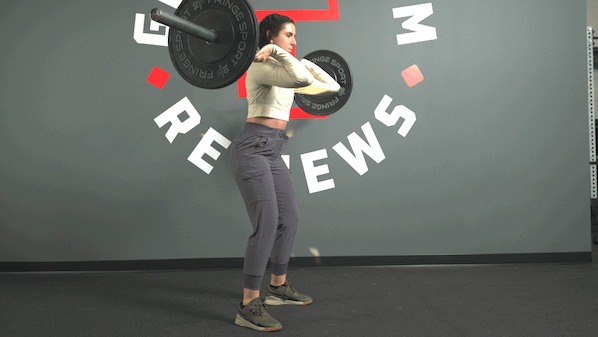
Modifications
- Dial it back: Try a goblet squat if you’re struggling to get the barbell in the front rack position. This exercise requires you to hold a dumbbell or kettlebell at chest level, which is less physically and technically demanding than balancing a bar across your front delts. This modification will allow you to work on your squat mechanics and build lower-body strength.
- Make it harder: Pause for two to three seconds at the bottom of the squat to increase time under tension. This promotes hypertrophy—aka muscle growth—by forcing your muscles to remain contracted longer. You can also make the front squat more challenging by adding variable resistance via chains or resistance bands. This will force you to work harder during the concentric portion of the movement, which can help you develop more power out of the hole.
RELATED: How And Why You Should Do Tempo Training
Front Squat Variations
- Zombie front squat: Balance the barbell on your shoulders with your arms extended straight in front of you. This variation can help improve your upper-body mobility and coordination.
- Double kettlebell front squat: Hold two kettlebells in the front racked position and squat with a shoulder-width stance and feet slightly turned out.
- Single-arm dumbbell front squat: Hold a dumbbell in one hand at shoulder height while performing the squat. This unilateral variation can help correct muscular imbalances and enhance your core stability.
- Banded front squat: Attach resistance bands to the barbell to increase tension throughout the movement. This variation can help improve explosiveness, making it particularly valuable for athletes involved in Olympic weightlifting, CrossFit, and other strength sports.
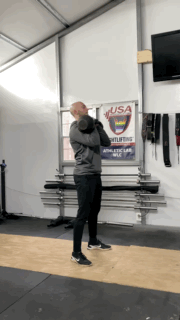
RELATED: 21 Best Squat Variations
Front Squat Alternatives
If you’re not ready to pencil front squats into your training program, you can still build muscle and strength using the same foundational movement pattern. Here are a few of my favorite alternative exercises that provide a similar stimulus.
Goblet Squat
Why do it: The goblet squat is an excellent alternative if you lack wrist flexibility or shoulder mobility for the barbell front squat. It’s also a great choice for beginners who need to learn how to get into a proper squat position while holding a weight.
How to do it:
- Hold a dumbbell or kettlebell at chest level with both hands.
- Stand with your feet shoulder-width apart and your toes slightly pointed out.
- Lower your body into a squat, keeping your chest up and elbows inside your knees.
- Push through your heels to return to the starting position.
- Repeat for the desired number of reps.
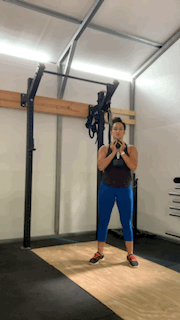
Hack Squat
Why do it: A staple bodybuilding exercise, the hack squat isolates the quads and allows for a controlled movement pattern. You can also switch up your stance on the machine to target specific muscle groups. For example, putting your feet together will force your vastus medialis (aka the teardrop muscle) to bear the brunt of the load.
How to do it:
- Position yourself on the hack squat machine with your shoulders against the pads and your feet shoulder-width apart.
- Lower the weight by bending your knees and hips, keeping your back flat against the pad.
- Push through your heels to return to the starting position.
- Repeat for the desired number of reps.
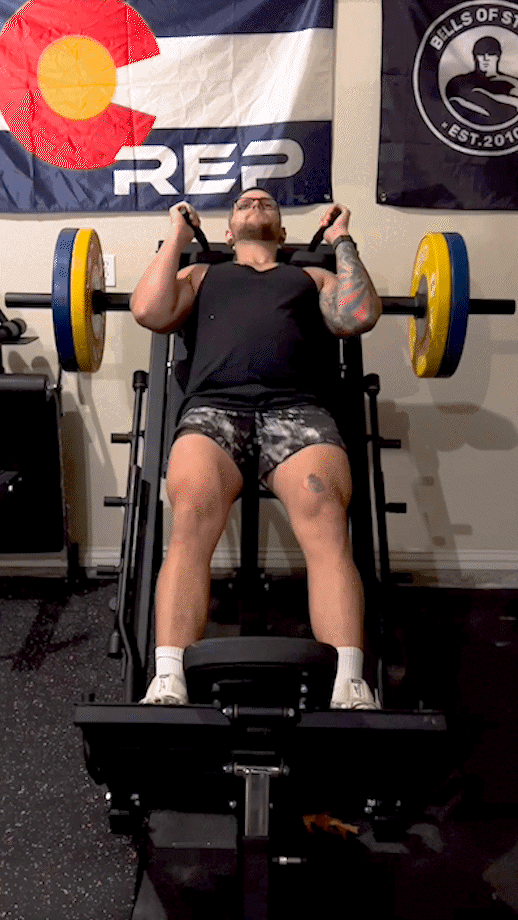
Bulgarian Split Squat
Why do it: The Bulgarian split squat is a challenging unilateral exercise that targets your quads, glutes, and hamstrings. This movement also helps improve your balance, stability, and core strength.
How to do it:
- Stand with your back to a flat weight bench.
- Place one foot on the bench behind you.
- Bend your front leg to slowly descend.
- Continue until your front knee forms a 90-degree angle.
- Pause, then push through the heel of your front foot to return to the starting position.
- Complete the desired number of reps, then switch sides and repeat the set.
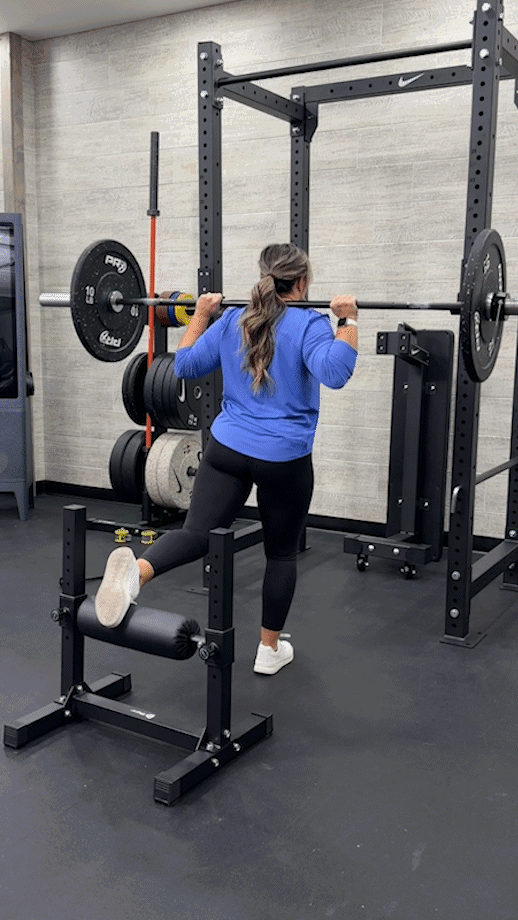
Zercher Squat
Why do it: The Zercher squat, where the barbell is held in the crook of your elbows, targets the same muscle groups as the front squat while also engaging your biceps and upper back.
How to do it:
- Position a barbell in the crook of your elbows, holding it securely with your arms bent at a 90-degree angle.
- Unrack the bar from the squat rack.
- Stand with your feet shoulder-width apart and your toes pointed slightly out.
- Lower your body into a squat, keeping your chest up and core engaged.
- Descend until your thighs are parallel to the floor.
- Push through your heels to return to the starting position.
- Repeat for the desired number of reps.
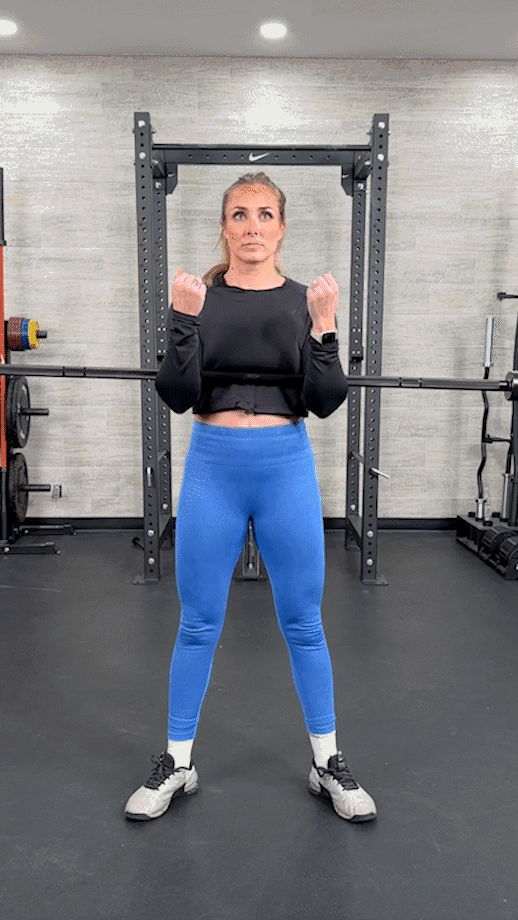
Split Squat
Why do it: Split squats effectively target the quads, glutes, and hamstrings while also improving hip flexibility and balance.
How to do it:
- Stand in a staggered stance with one foot forward and one foot back.
- Lower your body into a lunge position, keeping your torso upright.
- Push through your front heel to return to the starting position.
- Repeat for the desired number of reps on each leg.
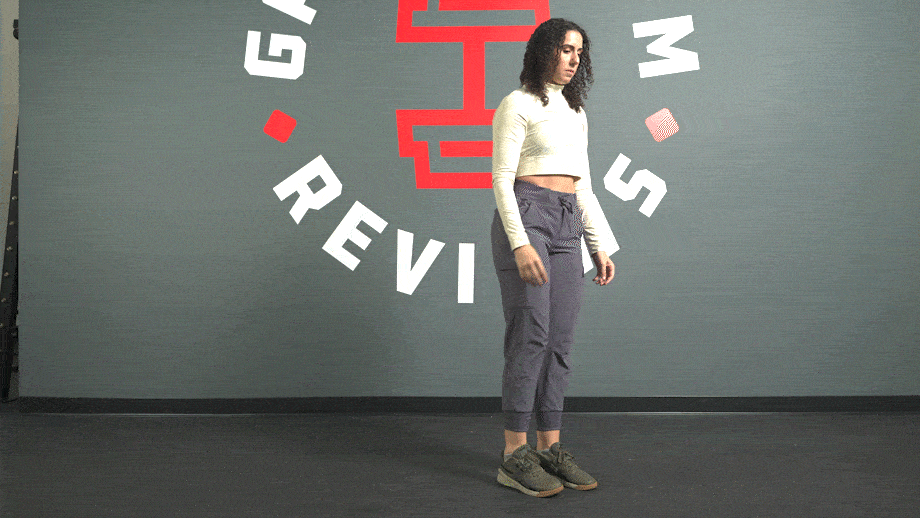
Benefits Of The Front Squat
Learning how to front squat can pay off in many ways. From building the quads of your dreams to improving your posture, here are some benefits of making this exercise part of your leg day routine.
Enhances Quadriceps Development
Front squats place a significant load on your quadriceps due to the upright torso position required to balance the barbell. Although back squats also engage your quads, a 2015 study1 shows that front squats activate your quads more, particularly the vastus medialis.
RELATED: 9 Best Quad Exercises
Reduces Strain On Your Lower Back
The front squat places less compressive force on your spine than back squats, reducing your risk of lower back issues. The upright posture required in front squats distributes the load more evenly and minimizes the forward lean that can strain your lower back. This makes front squats a safer option for those with lower back issues or those looking to avoid them.
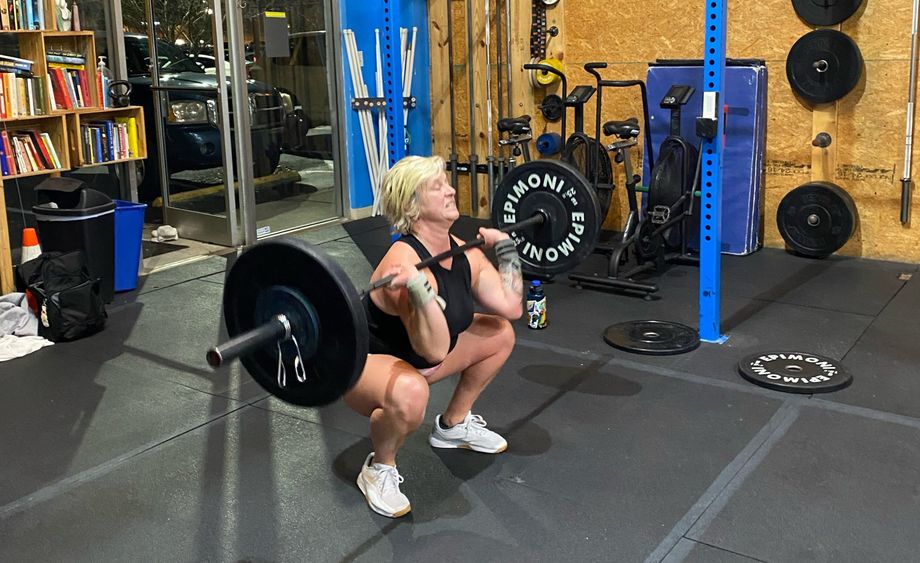
Improves Core Stability and Reinforces Good Posture
The front squat requires a strong, engaged core to maintain proper form and prevent your torso from leaning forward. This engagement strengthens your abdominals, obliques, and lower back muscles. A more stable core and stronger posterior chain can enhance your overall balance, posture, and performance in other exercises2.
RELATED: 13 Posterior Chain Exercises
Common Front Squat Mistakes
From incorrect foot placement to trying to go too heavy, there are plenty of ways to ruin your front squat experience. Avoiding these common mistakes can help you perform this exercise safely and effectively.
Rounding Your Back
Rounding your upper back during a front squat can be a recipe for disaster. This mistake will cause the barbell to roll forward, leading to significant strain on your posterior chain. Plus, depending on how much weight you have loaded, you may lose control of the bar entirely.
Letting Your Elbows Drop
Allowing your elbows to drop down instead of keeping them up and forward can also cause the barbell to roll forward, potentially leading to a loss of balance. This can also put additional strain on your wrists and forearms.
Using Too Much Weight
Lifting more weight than you can handle will compromise your technique and increase your risk of injury. Prioritize good form over heavy loads, especially with compound exercises like squats and deadlifts. There’s nothing wrong with starting with a light weight until you grow more comfortable with your front squat technique.
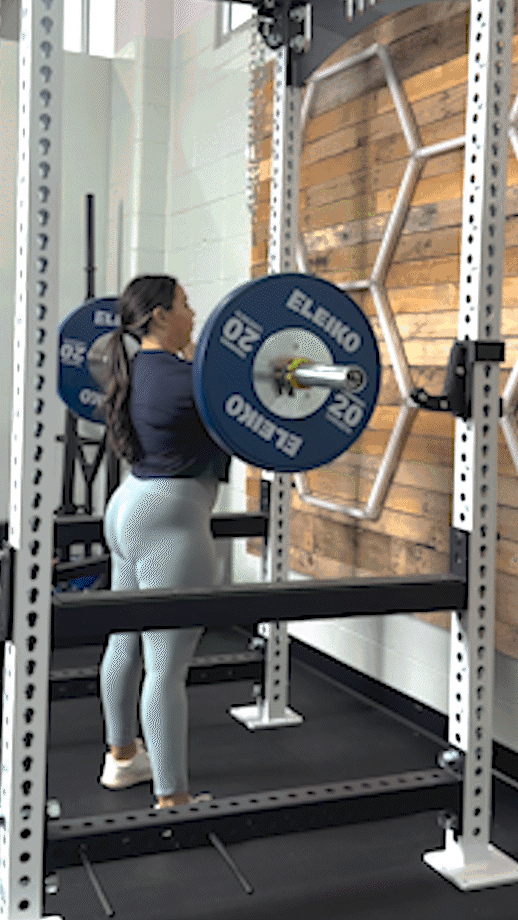
Incorrect Foot Placement
Placing your feet too close together or too far apart can lead to instability and improper tracking of your knees over your toes. Incorrect foot placement can cause knee pain and reduce the effectiveness of the squat by not fully engaging the targeted muscle groups.
Excessive Forward Lean
Leaning forward shifts the weight away from your quads and onto your lumbar spine, increasing your risk of injury. This mistake often stems from a lack of core strength or hip/ankle mobility issues. If you want to avoid posterior chain and back pain issues, maintain an upright torso position.
Not Reaching Proper Squat Depth
Failing to squat to an adequate depth (where your thighs are at least parallel to the ground) limits the engagement of your glutes and hamstrings. If you can’t achieve that feat, use a lighter weight. You may also need to work on your hip and ankle mobility, which can limit your range of motion.
Muscles Worked by the Front Squat
While it primarily targets the quadriceps, glutes, and hamstrings, the front squat also places significant demands on your core and shoulders for stability. Here’s a complete picture of the muscle activation taking place during this taxing exercise.
- Quadriceps: The primary movers in the front squat, your quads are responsible for extending your knees as you lift and lower the weight.
- Glutes: These muscles engage to help extend your hips and stabilize your pelvis during the squat ascent.
- Hamstrings: Although not as heavily involved as in back squats, your hamstrings assist in hip extension and help control the eccentric portion of the movement.
- Spinal erectors: These muscles run along the spine and are crucial for maintaining an upright torso and strong posterior chain throughout the squat.
- Rectus abdominis: Your abs contract to keep your core stable and maintain proper posture, preventing your torso from leaning forward.
- Obliques: Your obliques also assist in stabilizing your core and maintaining an upright posture during the squat.
- Trapezius: Your upper traps help support the barbell by keeping your shoulders stable throughout the movement.
- Anterior deltoids: The muscles on the front of your shoulders assist in holding the barbell in place.
- Forearms: Your forearm muscles help with gripping and stabilize the barbell, especially when using a clean grip.
RELATED: 10 Leg Extension Alternatives That Will Crush Your Quads
Front Squat: Final Thoughts
Whether your goal is to grow massive quads, improve your overall squat performance, or develop more power and explosion, the front squat is a valuable addition to any strength training regimen. Remember to prioritize proper form and avoid overloading with excessive weight to keep your knees, lower back, and shoulders safe. While you don’t have to be an Olympic lifter to enjoy its benefits, don’t be surprised when you start seeing significant improvements in your strength and stability once you’ve made the front squat part of your routine.
Bringing it all to the forefront:
- Not only is the front squat beneficial for quadriceps development, but it also helps develop core and upper-body strength.
- Excessive forward lean and inadequate wrist flexibility can cause you to perform this exercise incorrectly, potentially leading to injury.
- Pairing the front squat with classic lower-body movements like lunges and Romanian deadlifts can pave the way for stronger, more muscular legs.
Front Squat: FAQs
What does a front squat work?
The front squat primarily targets the quadriceps, glutes, hamstrings, core muscles, and upper back.
Are front or back squats better?
Neither squat variation is inherently better than the other. However, front squats place more emphasis on your quads and core than back squats. Including both in your program will make you a more well-rounded lifter.
What are the benefits of the front squat?
The front squat offers several potential benefits, including increased quad strength and mass, enhanced core stability and posture, and better functional strength and overall coordination.
What are the disadvantages of front squats?
Front squats can cause wrist and shoulder discomfort due to the front rack position, which requires significant core and upper back strength for proper form. They also have more limited strength-building potential than back squats since you typically can’t go as heavy.
References
- Yavuz HU, Erdağ D, Amca AM, Aritan S. Kinematic and EMG activities during front and back squat variations in maximum loads. J Sports Sci. 2015;33(10):1058-66. doi: 10.1080/02640414.2014.984240. Epub 2015 Jan 29. PMID: 25630691.
- Leong, C. H., Forsythe, C., & Bohling, Z. (2024). Posterior chain and core training improves pelvic posture, hamstrings-to-quadriceps ratio, and vertical jump performance. The Journal of sports medicine and physical fitness, 64(1), 7–15. https://doi.org/10.23736/S0022-4707.23.15171-1


